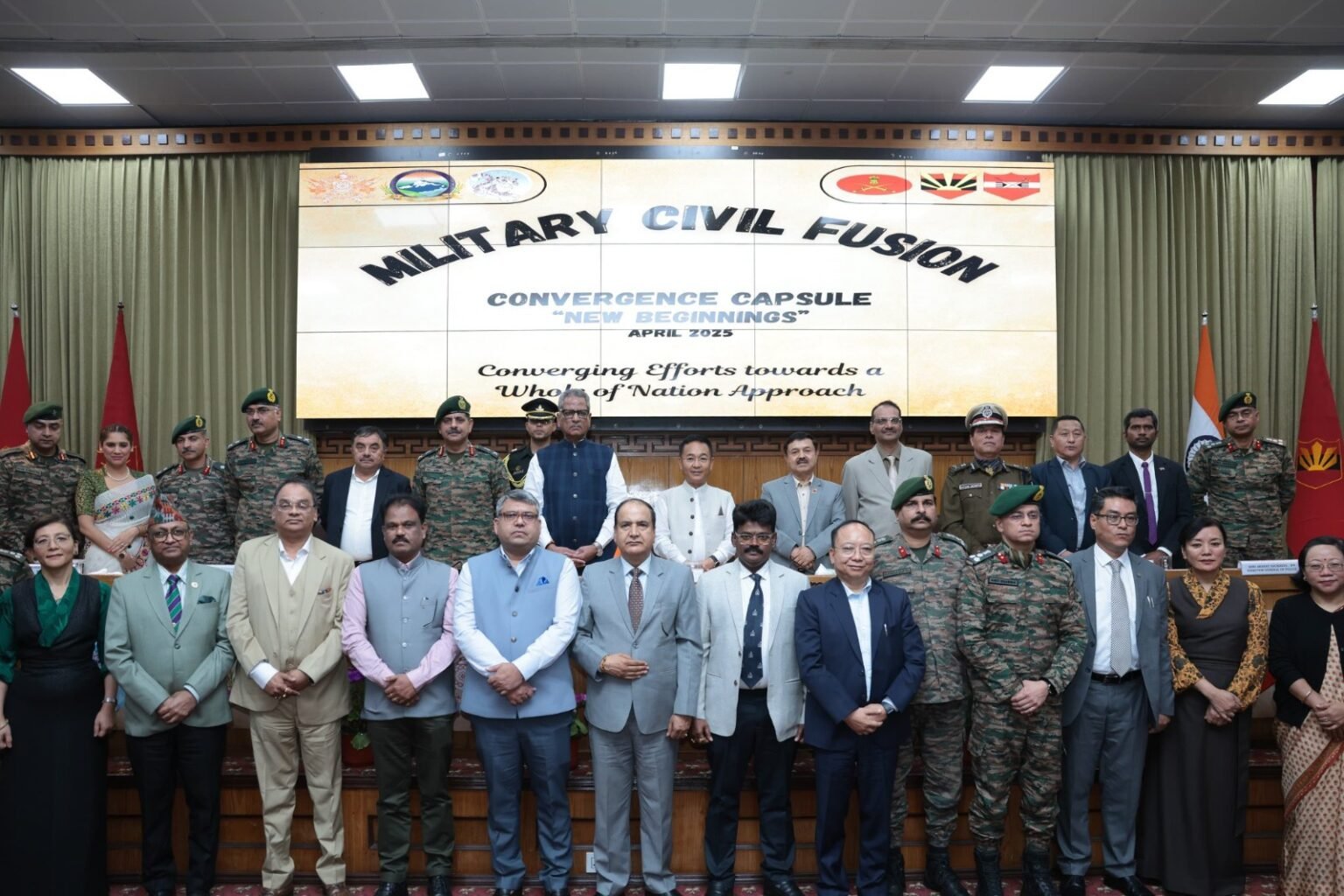GANGTOK: The six-day Military-Civil Fusion Convergence Capsule, culminated on Thursday with a grand valedictory ceremony graced by Governor of Sikkim, Om Prakash Mathur, as the chief guest, alongside Chief Minister Prem Singh Tamang.
The event, a first of its kind in the state, was attended by Cabinet Ministers, GT Dhungel and NB Dahal, General Officer Commanding 33 Corps Lieutenant General Zubin A Minwalla, Chief Secretary R Telang, Director General of Police Akshay Sachdeva, and other senior officers from the state administration and armed forces.
In his valedictory address, the Governor thanked the Prime Minister and Defence Minister of India for initiating such a transformative programme and for choosing Sikkim as the starting point of this convergence initiative. He expressed gratitude for the centre’s confidence in the state, viewing it as a valuable contributor to national development and security.
He paid tribute to the recent victims of the terrorist attack in Pahalgam and extended his prayers for the speedy recovery of the injured.
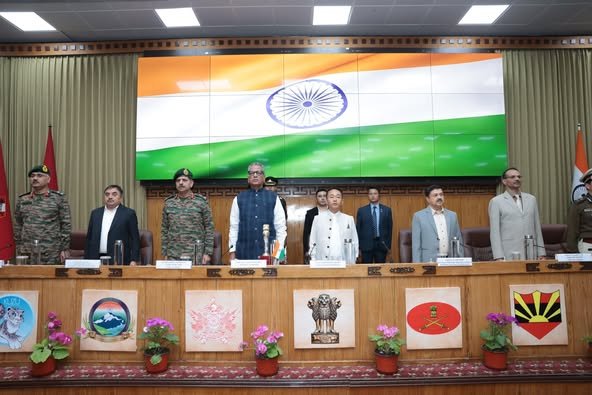
The Governor underlined the significance of social harmony as the foundation of national progress and stressed that convergence between the Army and civil administration in border regions is essential for integrated development.
Praising the Vibrant Villages Programme for its vision to empower citizens living near border areas and prevent their migration to cities, the Governor highlighted the need to treat border villages not as the “last” but as the “first” priority of the nation.
The Governor assured full support from the state government and administration for future collaborative programmes with the Army. He reiterated the government’s commitment to ensuring that the people living in border areas remain integral to the nation’s security framework.
He informed that the state would be observing “Nathula Vijay Diwas” annually on September 11, instead of simply “Nathula Day,” to commemorate the 1967 victory against China. He proposed the creation of a documentary to raise awareness about the valour displayed by Indian forces during that India-China conflict, especially among youth.
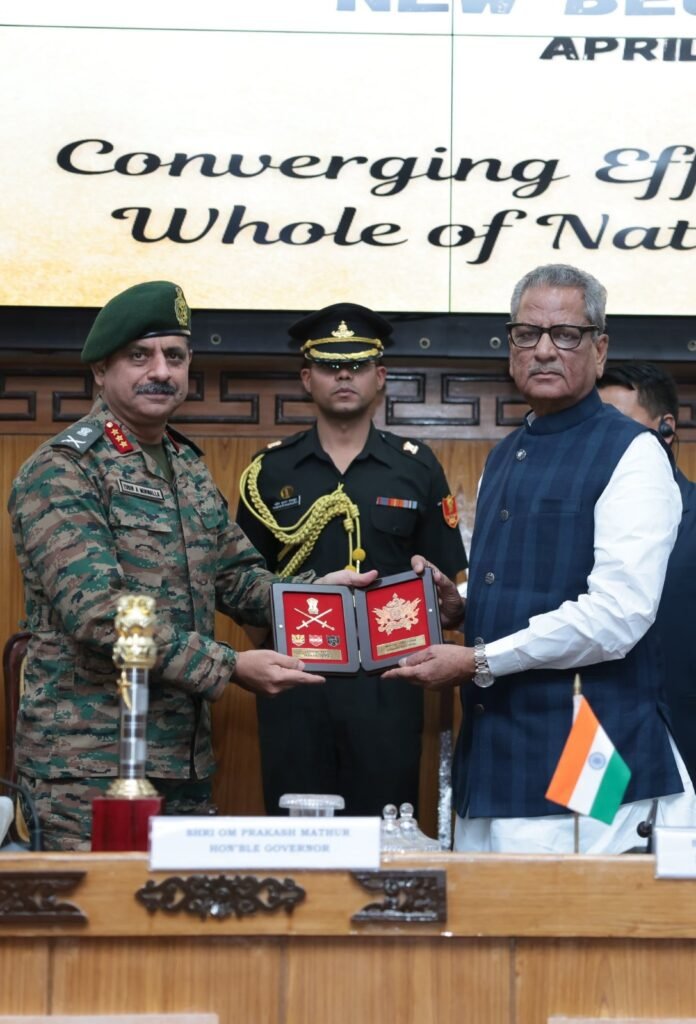
Reflecting on the increasing cooperation between the state and the armed forces, the Governor acknowledged the infrastructural and emotional support extended by the military in times of natural disaster, particularly citing the October 2023 flash floods.
He stressed the importance of building facilities such as restrooms and cafeterias along major routes like the newly established “Prerna Sthal” at Bardang, a tribute to the 22 soldiers who lost their lives during the October 2023 floods.
He also recommended the formation of a core coordination committee comprising Army, civil administration, police, and paramilitary representatives to address rising concerns such as youth mental health, including suicide rates. He highlighted the need for continuous monitoring and community engagement to address these social challenges.
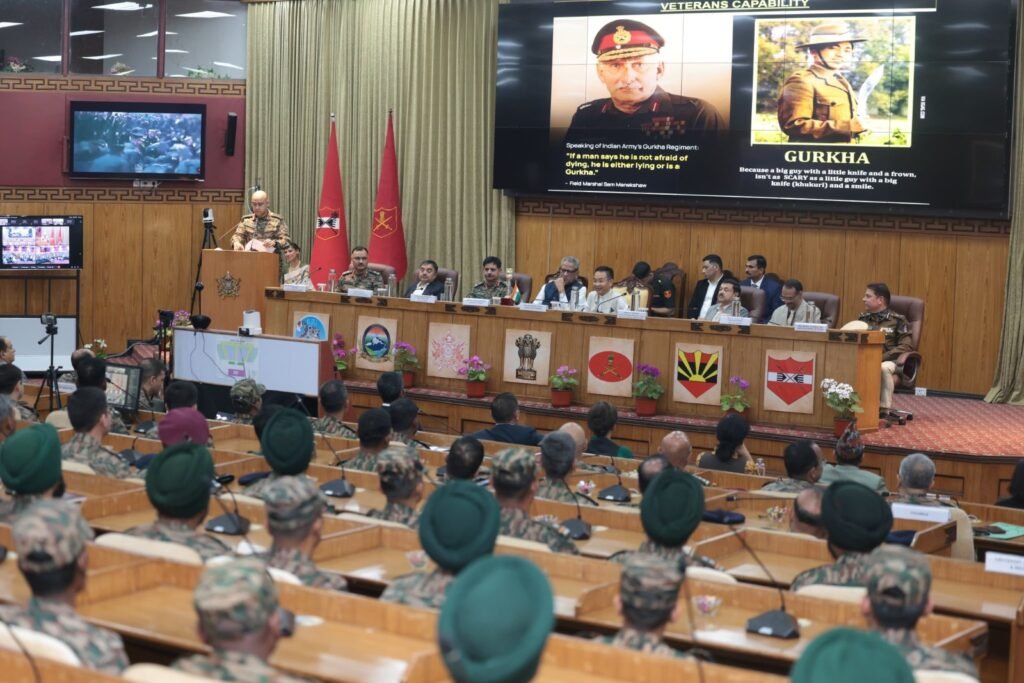
On a broader level, he appealed to all stakeholders to work collectively in harmony—soldiers, civil officers, and citizens—towards Prime Minister Narendra Modi’s vision of a developed and self-reliant India. He urged civil officials to go beyond protocol and build genuine bonds with local communities, promoting mutual trust and cooperation at the grassroots level.
Chief Minister Prem Singh Tamang, in his keynote address, strongly condemned the terrorist attack in Pahalgam and, on behalf of the people and government of Sikkim, conveyed deep condolences to the families of the martyrs while praying for the speedy recovery of those injured.
He stated that the Military-Civic Fusion Capsule had created a valuable platform to reflect on the crucial role of military-civil synergy in national security and socio-economic development, especially in a sensitive border state like Sikkim. He acknowledged the Indian Army’s constant support in times of crisis, whether during natural disasters or in maintaining peace, and expressed sincere gratitude for their unwavering cooperation.
He highlighted that the coordinated efforts between the Indian Army and the state government had facilitated the development of roads, communication networks, and essential infrastructure, benefiting both civilians and the armed forces.
He affirmed that future infrastructure projects, such as roads and digital connectivity, would move forward in close coordination with institutions like the Border Roads Organization.
The Chief Minister emphasised that ex-servicemen in Sikkim, with their discipline, skills, and experience, represented a significant human resource for the state’s development. He shared that new initiatives had been launched to integrate veterans into sectors like tourism, disaster management, agricultural extension, and training.
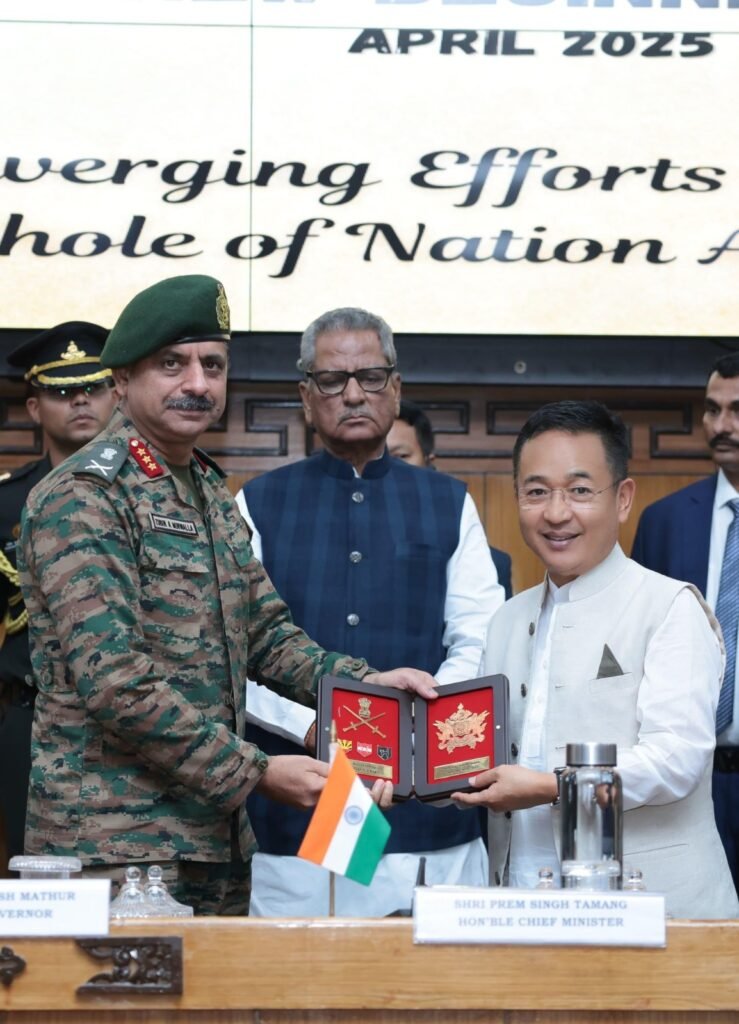
The establishment of veterans’ cooperatives and skill centers was also underway to support their entrepreneurial and administrative contributions, he added.
He announced a progressive policy reserving 20% of Sikkim Police Constable positions for Agniveer veterans. In addition, a 10-year relaxation in the standard upper age limit of 40 years has been introduced for ex-servicemen who have served at least six months in the Armed Forces, enabling them to apply for these positions until the age of 50.
To further support their post-service livelihoods, the state will also initiate shop allotments for ex-servicemen.
He explained that Military-Civic Fusion was not merely a concept but a strategic integration between defense and civil sectors, aimed at reinforcing national security and accelerating economic growth. This integration, he noted, involved shared use of infrastructure, technology, knowledge, and resources, all aligned with the vision of Atmanirbhar Bharat, a self-reliant India.
The Chief Minister stated that the aim of the Military-Civic Fusion 2025 initiative was to consolidate collective efforts for a developed India by 2047. The strategy, he pointed out, was to combine military strength, civil infrastructure, scientific innovation, and private enterprise to ensure that national security and socio-economic development moved hand in hand.
He stressed the importance of mainstreaming dual-use technologies, encouraging innovation, and constructing joint infrastructure through active partnerships between the military and civilian sectors. Training programmes must incorporate military discipline alongside civil productivity to prepare Indian youth for global challenges, he added.
He underlined Sikkim’s vital role in India’s developmental journey, being a strategically located Himalayan state. The people and government of Sikkim, he affirmed, deeply valued their longstanding and cordial relationship with the Indian Army. He noted that their shared priorities included easing strategic supply chains and building environmentally sensitive infrastructure such as roads and bridges.
The Chief Minister added that the state was also working to establish innovation centers in remote areas and to promote border tourism and pilgrimage circuits as part of fostering national unity.
He drew attention to Sikkim’s geographical importance, sharing borders with China, Nepal, and Bhutan, and acting as a crucial connector between Northeast India and the rest of the country. Despite its size, Sikkim had remained largely free from terrorism and anti-national activities, something he attributed to the firm support of the Central Government under the leadership of the Prime Minister of India.
He praised the role of the Indian Army in safeguarding national borders and acknowledged the contribution of the Sikkim Police in maintaining internal peace. He stated that the state had earned a reputation for being one of the safest places for women and was a model for low crime rates and gender inclusivity.
He further mentioned that Sikkim had contributed meaningfully to India’s energy and security sectors and reaffirmed the state’s unwavering commitment to the nation’s unity and integrity. He thanked the Prime Minister for his visionary leadership in strengthening the armed forces and bolstering border security.
The Chief Minister reiterated the Prime Minister’s vision that true development could only be achieved when the last village in the country was empowered. He appreciated the government’s efforts to curb migration from border areas by improving access to basic facilities in remote locations.
Lastly, he lauded the Indian Army and BRO for their role in environmental protection. He cited the success of tree plantation drives conducted by Army personnel, which had contributed to preserving Sikkim’s rich biodiversity, an asset he described as essential for long-term national security.
He expressed heartfelt appreciation to the Indian Army for their dedication and partnership, declaring that this ten-day programme marked not an end, but the beginning of a stronger, safer, and more prosperous Sikkim through the enduring spirit of military-civil unity.
In his special address, GOC 33 Corps Lt Gen Zubin A Minwalla, emphasised that national security extends beyond borders to include economic, environmental, and internal dimensions. He highlighted the need for civil industry and academia to support the Army’s technological advancement.
Stressing the need for a whole-of-nation and whole-of-government approach, he highlighted that infrastructure such as quality road networks, helipads, and hospitals is vital to both national defense and civilian development.
Calling the fusion a strategic strength, he stressed that Sikkim’s development priorities and the Army’s border focus can and should converge. He praised the state government’s veteran welfare efforts and mentioned the Sadbhavna Scheme’s role in building goodwill in border communities.
The course of the event also included several insightful presentations that further enriched the discourse on civil-military cooperation and national preparedness.
Commander 17 Mountain Artillery Division Brigadier Kunal Mukherjee, delivered a presentation titled Sikkim Ranbhoomi Darshan. This initiative aimed to honor the bravery of soldiers while simultaneously promoting responsible tourism in border areas. He emphasised that such efforts not only bolster national security but also instill a deep sense of patriotism and awareness among citizens.
Colonel SK Pal from the Black Cat Division presented Veterans se Sanjhedari, highlighting the potential of veterans in contributing to inclusive societal efforts. He underscored the inspirational role of veterans in uplifting weaker sections of society and engaging in meaningful social causes, reinforcing their relevance beyond active duty.
Additionally, Director Sikkim State Disaster Management Authority (SSDMA), Mr Prabhakar Rai, and Additional Chief Engineer Department of Science and Technology Ashim Basnett, jointly presented an in-depth analysis titled Risk Assessment of Sikkim Response Mechanism to GLOF 2023 and Lessons Learnt.
Their presentation provided a critical evaluation of the state’s preparedness and response to the 2023 Glacial Lake Outburst Flood, drawing lessons to strengthen future disaster risk reduction strategies in a climate-sensitive region like Sikkim.
Earlier, the programme began with a moment of silence for the victims of the Pahalgam terrorist attack, followed by a welcome address by GOC Black Cat Div Maj Gen Mahipal Singh Rathore.
The vote of thanks was delivered by Deputy GOC 17 Mountain Division Brigadier Arjun K.
- IPR Report


